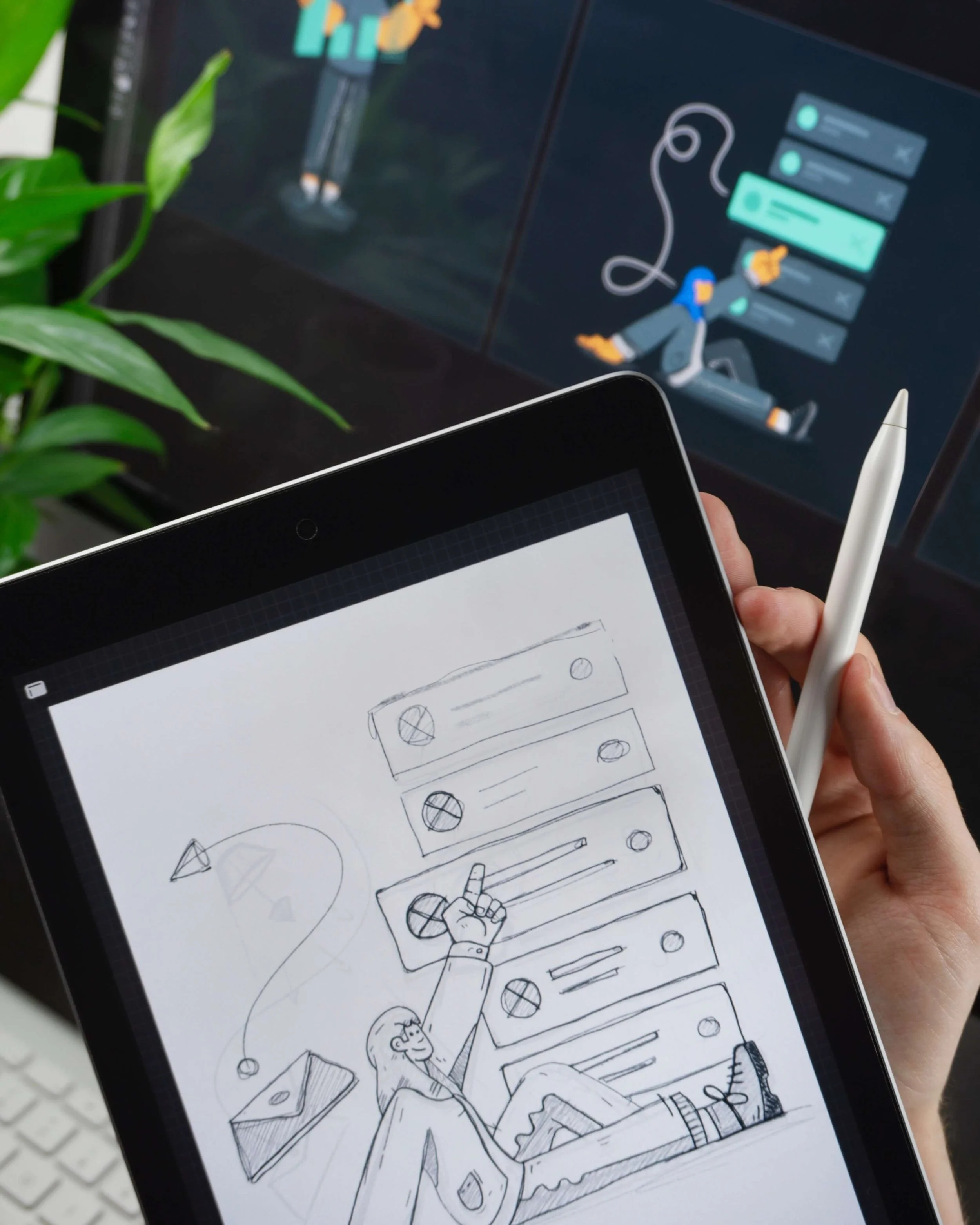Making a Graphic Design Project More Sustainable
Calculating the sustainability of a graphic design project can be tricky because there’s not always something tangible to measure. That doesn’t mean that service-based businesses – like graphic designers – are entirely off the hook for needing to think about being sustainable. Print design projects have an obvious footprint, however, within the last ten years, so much of graphic design is entirely digital – it will never see the likes of a printing press – but that doesn’t mean it doesn’t have its own carbon footprint.
Although there’s not a physical thing being produced, shipped and sold, everything on the internet needs to live somewhere; stored at a data center or server somewhere. According to Wikipedia, data centers can take up as much electricity as a small town and consume 3-5% of the world's global energy. Hot tip: Take an hour or three to fall down the rabbit hole of the inner workings of a data center on Wikipedia!
There are some steps graphic and web designers can take to make our practices more sustainable. Take a look:
Make Digital Assets More Sustainable: Use sites like TinyJPG to downsize your photo or graphics file sizes before uploading them to social media, websites, blogs, etc. These sites can help make images up to 90% smaller. Not only will this make a website load faster, but it also takes up less space on a server.
Make Print Marketing Materials More Sustainable: Before you start a print project, ask your printer about recycled paper, paper alternatives (like hemp or straw), Forest Stewardship Council (FSC) Certified paper and petroleum-free inks. Printing locally vs. at a facility on the other side of the country helps save on shipping and freight costs – especially with larger jobs. As designers, it’s our job to educate and influence our clients to make eco-friendly decisions on printing processes. If you want to learn more about this, I’ve written a full blog about it: 6 Questions to Ask Your Printer About Green and Eco-Friendly Printing
Make Packaging More Sustainable: Have resources for assisting your clients with finding eco-friendly packaging processes and materials including minimalistic packaging, plastic-free packaging, recycled and recyclable packaging, local production facilities, and eco-friendly printing inks. The Sustainable Packaging Coalition has tons of great resources. Surprisingly, another really helpful tool is Walmart’s Sustainable Packaging Playbook (who woulda thought). Shoutout to my packaging guru cousin-in-law, Kara, for sharing this one.
Make Websites More Sustainable: In addition to keeping your image sizes down, there’s an increasing number of green web hosts that run off of renewable energy like wind and solar. Some web hosts that are using carbon-neutral web hosting are GreenGeeks, greenhost, kualo. You can also calculate the carbon of your website at websitecarbon.com
General Green Business Practices: Work with clients whose values align with yours. Volunteer, donate and give back to your community and causes you care about. Talk about your sustainability practices and efforts in your marketing and messaging. Practice sustainability at home. I have a lot of ideas for this! In fact, I have an awesome blog full of ideas for you: 5 Green Tips for Small Businesses.
What other ways have you found to make your projects better for the planet? I’d love to hear what you’re working on.
I’m a graphic designer who works with conservation-minded nonprofits and brands on projects like logos & branding, annual reports, maps, and infographics. I work with my clients to create beautiful and meaningful design that amplifies the marketing efforts it takes to ignite action and change. If you need help getting started on your next project to save the planet, let’s set up a time to chat.

